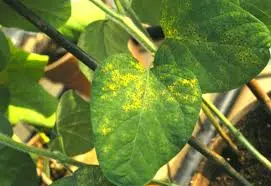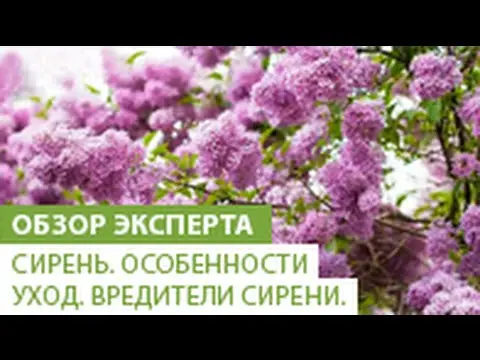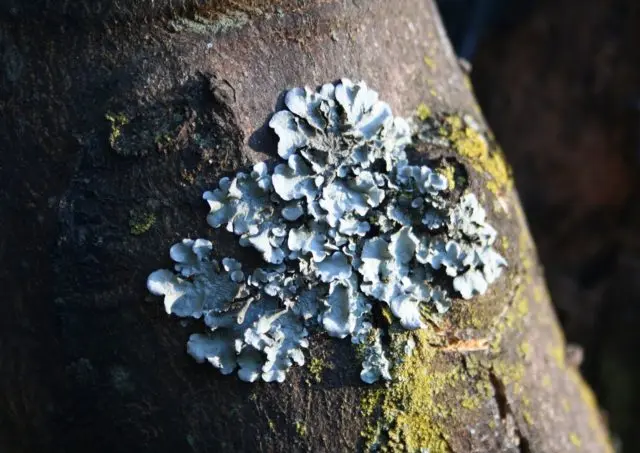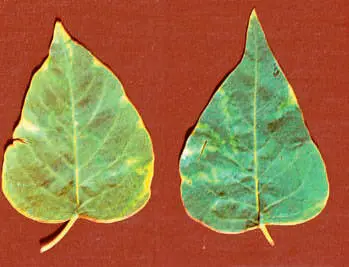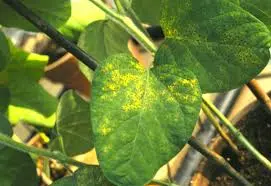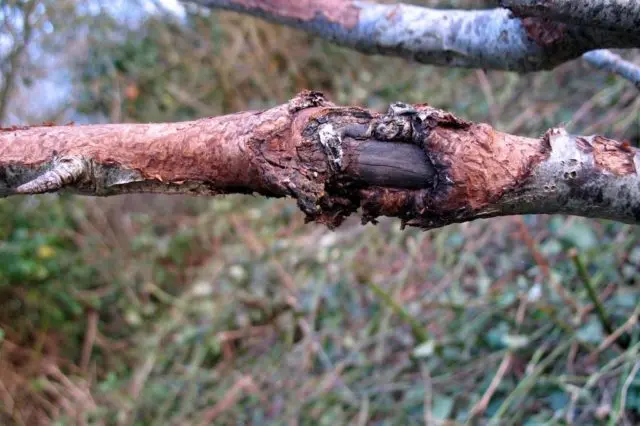Contents
Lilac is used for decorative purposes, landscaping the site, creating a hedge. Like any plant, it is susceptible to diseases and pests. Under their influence, the shrub develops slowly and may die. The following are pests, lilac diseases and their control, which will help gardeners save the plant.
Lilac pests and their control
Lilac pests feed on buds, leaves, flowers, branches. As a result, the development of the shrub slows down, fewer inflorescences appear, leaves and shoots are deformed.
Lilac mole
If the lilac has leaves with brown spots, this is the first sign of the appearance of a lilac moth in the area. Its caterpillars feed on the leaves of the bush, which turn brown, turn into tubules and die. At first glance, it seems that the plant was damaged by fire.
Lilac moth butterflies fly out in mid-May – early June. For 5 – 6 days, the female lays several hundred eggs from the underside of the leaf. After 5 – 10 days, caterpillars appear that destroy the leaf plate. Caterpillars of the second generation appear at the end of September. Their pupae overwinter in the soil at a depth of up to 5 cm.
Spraying lilacs with Inta-Vir, Iskra, Karbofos helps to fight the pest. The first treatment is carried out at the beginning of flowering and repeated after 3 weeks. Affected shoots are cut and burned.
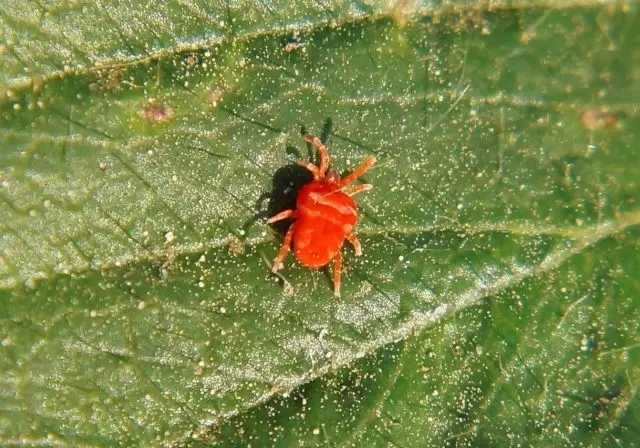
Lilac mite
The lilac tick is a dangerous pest that is not visible to the naked eye. Its dimensions do not exceed 0,2 mm. The tick damages the lilac buds, which swell and shrink on the branches. The pest feeds on the juice of young leaves. It hibernates inside the buds and starts breeding in early spring. Several generations appear during the season.
Spraying with Carbolineum emulsion at a concentration of 6% helps to get rid of the lilac mite. Processing is carried out in early spring. During the growing season prepare a 0,1% solution of the drug Tiofos. Spraying is carried out in June during the period of active reproduction of the pest. For prevention, lilac seedlings are kept in a barrel of water before planting.
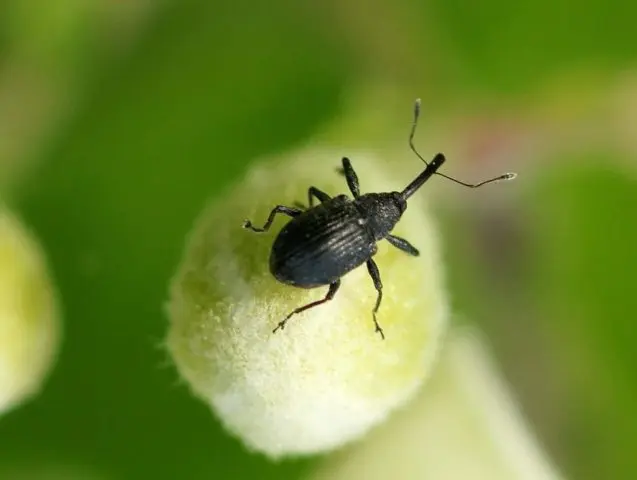
Acacia false shield
Acacia false shield is a small insect no larger than 3 – 6 mm in size. Its body is oval, dark yellow or brown. Pest larvae feed on lilac juice. As a result of their activity, the size and number of leaves that fall prematurely are reduced. Shoots are deformed and dry out.
False scale insect lays eggs during May. The first larvae appear in the second half of June, the next – in early August. The pest hibernates in the bark, cracks in the branches, at the base of the branches.
To get rid of acacia false scales, Ditox or Sumition are used. Such products are effective and are not washed off by rain. In personal subsidiary farms, universal insecticides are used – Fufanon and Iskra.
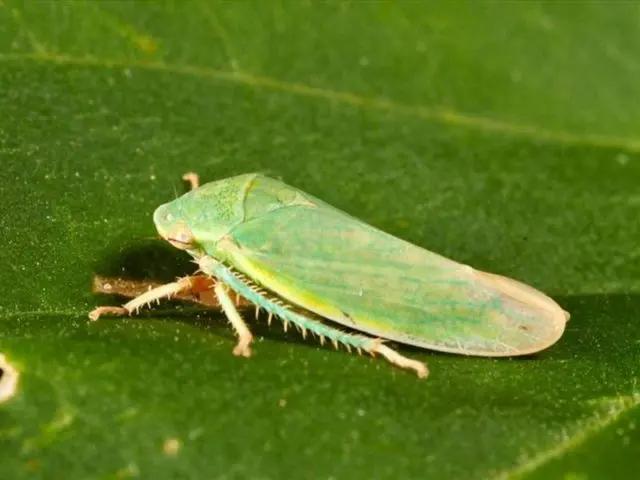
Weevil
The weevil is a small beetle that feeds on lilac leaves. After it, holes of various sizes remain in the sheet plate. Root shoots, leaves of the lower and middle tiers suffer the most from the pest.
During the day, weevils are found in bark cracks or fallen leaves. The period of activity falls on the evening and night. Pests overwinter in bark or soil.
During the growing season, lilacs are sprayed with Fufanon Expert, Vantex, Inta-Ts-M. The product is diluted with water according to the instructions and sprayed with shrubs. The consumption of the working solution is 2 – 5 liters per bush. Good results are obtained by digging the soil in the fall. The weevil is on the surface of the earth and dies when the temperature drops.
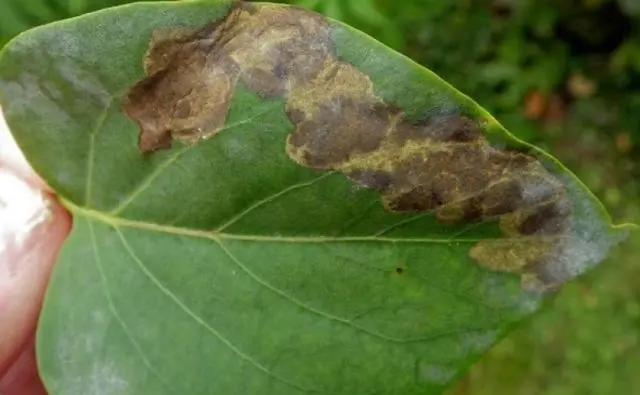
Apple comma-shaped scale insect
The apple scale insect is a representative of proboscis insects. The female parasite has a gray-brown elongated scutellum 3 mm long. Males are reddish gray and small in size. Pest eggs are white, oblong, hibernate under the shields of dead females. The larvae appear at the end of May and spread through the bush.
The larvae stick tightly to the shoots and form a shield. Under favorable conditions, the scale insect multiplies rapidly and covers most of the lilac branches. The shrub weakens, gives few inflorescences and is depleted.
The systemic drug Ditox helps to fight the apple scale. Pests die in the first hours after treatment. The drug is not washed off by rain. For prevention, the crown is necessarily thinned out, the root shoots, dry and damaged shoots are cut out.
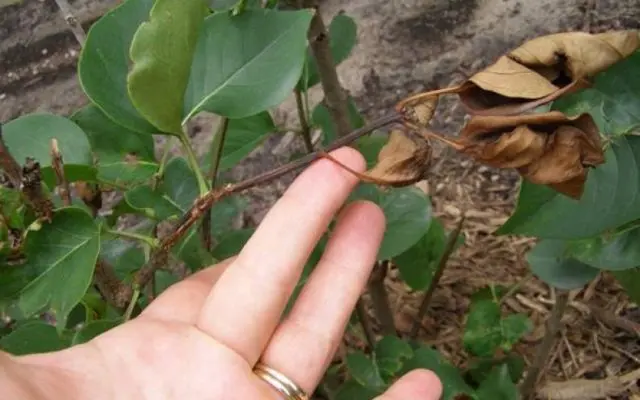
Rose leafhopper
The rose leafhopper is a narrow insect up to 3,5 mm long with green-yellow wings. Pest eggs overwinter in the bark on the tops of young shoots. The larvae appear when the leaves bloom in late April – early May. The pest feeds on the sap of the leaves. As a result, numerous white spots remain on the leaf plate.
To combat the pest, insecticides Ditox or Alfashance are chosen. The drugs are used in small doses. Their effect is manifested within a few hours after treatment. Solutions are not washed off by precipitation and remain effective when weather conditions worsen.
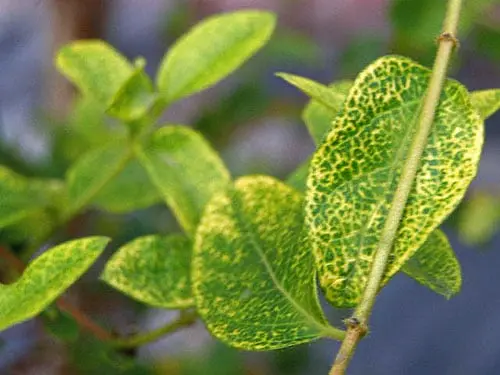
The most common lilac diseases and their treatment
Timely diagnosis of diseases will help save the bush. The following are the most common lilac diseases and their treatment with photos. Diseases are divided into several groups, depending on the nature of the lesion.
Fungal
Fungal diseases develop due to the vital activity of microscopic fungi. Usually the lesion spreads in cold and wet weather. The cause of the disease is often weakened immunity of the shrub, caused by an excess of nitrogen and a lack of potassium. As a result, the plant becomes susceptible to fungus.
Types of fungal diseases of lilac:
- Powdery mildew. It has the appearance of a white coating on the leaves of a shrub. First, small white spots appear, which grow and occupy the entire surface of the sheet. Within a week, the plaque becomes dark, the shrub stops developing. The disease affects both adult lilacs and young plants. Most often, its signs appear at the end of a cold and damp summer;

- Brown spotting of lilac. Appears as gray spots with brown edges. Gradually, the lesion grows, the inner part dries up and falls out. Holes remain on the leaves;

- Anthracnose. The disease is identified by brown spots on lilac leaves. Ulcers may be orange or pinkish in color with a purple border. The defeat covers leaves, stems, flowers;

- Septoria. The disease appears in the form of light spots: yellowish or gray. Gradually, the lesion spreads and causes the leaves to wilt, the tops of the shoots to dry out, and the flowers to fall off;

- Lichens. White spots on the trunk of a lilac may be lichen. These are representatives of the Mushroom class, which often appear on old trees and shrubs. At risk are plants with cracks in the bark and a thickened crown. Lichen affected by lichen develops slowly and is susceptible to other diseases.

To combat lilac diseases, products containing copper are used. This includes Bordeaux liquid, copper sulphate, Topaz, Nitrofen, Oksihom, Ridomil, Skor. They are diluted with water and sprayed with shrubs. After 7-10 days, the treatment is repeated.
To get rid of lichen on lilac, choose a mechanical method. They take nylon brushes or wooden scrapers and carefully clean the trunk of the bush. At the same time, they try not to damage the lilac bark. Then the treated areas are sprayed with a solution of ferrous sulfate at a concentration of 5%. Whitewashing bush trunks helps reduce the risk of lichen infection.
Viral
The causative agents of this group of diseases are pathogenic viruses. The first symptoms appear in the spring when the lilac leaves bloom. Dark spots appear on them, mosaic, twisting is observed.
Description of viral diseases of lilac:
- Ring mottle. The disease is determined by light spots and strokes on lilac leaves. Gradually, the lesion completely covers the leaf plate. The virus is spread by pests: nematodes and whiteflies;

- Ring spot. It manifests itself in the form of rounded chlorosis spots on lilac leaves. Symptoms of the disease occur in the first half of summer and early autumn. After a year, the shoots dry out and die. The carriers of the disease are nematodes – microscopic worms living in the soil. The virus also spreads along with garden tools.

- Chlorotic leaf spot. This is a disease of lilac leaves, on which light patterns appear. Gradually, the foliage is deformed and falls off.

Viral diseases cannot be treated. If the degree of damage is weak, then cut off the affected leaves and shoots. The shrub is fed with potash and phosphate fertilizers. If the disease does not recede, then you will have to uproot the lilac and disinfect the soil.
Mycoplasma
Mycoplasma diseases occur when specific micro-organisms spread. They occupy an intermediate position between bacteria and viruses. The carriers are insects. Mycoplasmas penetrate into plant tissues and disrupt their development.
The most common mycoplasmal disease of lilac is panicle. On the affected lilac, many thin side shoots are formed, collected in a large bunch. This disease is also called “witch’s broom.” The whole tree suffers from it: the leaves become small and wrinkled, their color turns pale, fewer flowers appear.
To prevent the spread of panicle, preventive measures are observed. For planting choose high-quality lilac seedlings. During the growing season, the shrub is sprayed to control pests that carry the disease.
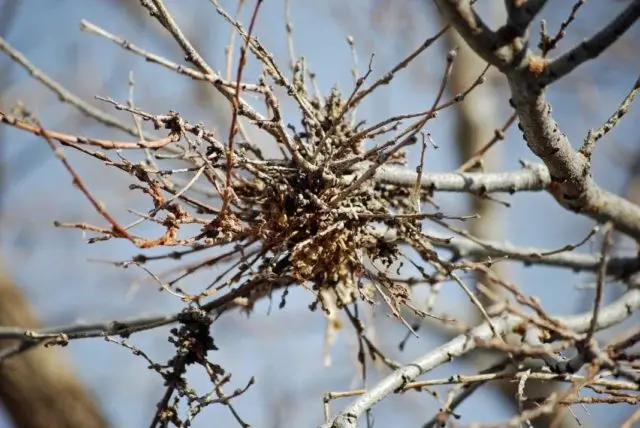
Bacterial
Bacteria are single-celled microorganisms that feed on the juices and tissues of plants. The causative agents of bacterial diseases develop in the presence of damage in the lilac bark. Therefore, for their prevention, special attention is paid to inspecting the shrub, disinfecting tools, processing after cutting the shoots.
Bacterial diseases of lilac:
- Bacterial shoot rot. If lilac leaves turn black, this is the first sign of the spread of bacterial rot. The lesion is also detected on young shoots, flowers and buds. As a result, young and old branches dry out. Infection spreads in places of mechanical damage, and then actively spreads at high humidity;

- Necrosis. The disease destroys the lilac bark, leads to the death of the shoots and the death of the shrub. Infection is facilitated by severe frosts, drought, and the spread of pests. As a result, the lilac receives less nutrition and dies.

If the first signs of bacterial rot are found, then the lilac can still be saved. The shrub is sprayed with a solution of copper oxychloride at a concentration of 5%. The affected areas are cut and burned. The treatment is repeated after 10 days.
To combat necrosis, the affected areas of the cortex are carefully removed. Then the shrub is treated with fungicides. For prevention, it is important to remove fallen leaves, perform sanitary pruning. All cracks and wounds on lilacs are treated with copper sulphate. Then they are covered with a mash of clay and mullein.
Control and prevention measures
Lilac diseases and pests inhibit shrubs: they are also dangerous for other plants. Fighting them involves the use of various methods. The most popular of them are chemicals and folk remedies.
Chemical preparations are diluted with water in the desired concentration. Be sure to use personal protective equipment. Processing is carried out in dry cloudy weather. The frequency of spraying – no more than once every 7 – 10 days.
Folk remedies are safe for plants and humans. Such methods have no restrictions in use and are well suited for prevention. These include infusions of wormwood, onion and garlic husks, tobacco dust, wood ash. Lilacs are dusted or sprayed with a solution.
Special measures are taken to prevent diseases and pests. For this you need:
- use high-quality planting material, without defects and signs of damage;
- perform sanitary pruning of shoots;
- do not injure the cortex, monitor its condition;
- remove fallen leaves in autumn;
- regularly feed lilacs with mineral complexes;
- observe the dosage of nitrogen fertilizers;
- dig up the soil in autumn;
- periodically spray the shrub with solutions of insecticides and other drugs.
Conclusion
Lilac diseases and the fight against them, given above, will help to diagnose the lesion in time and take action. So that the shrub does not suffer from pests, regular spraying with insecticides is performed. In order to avoid the spread of diseases and insects, agricultural practices are observed and preventive treatments are carried out.










